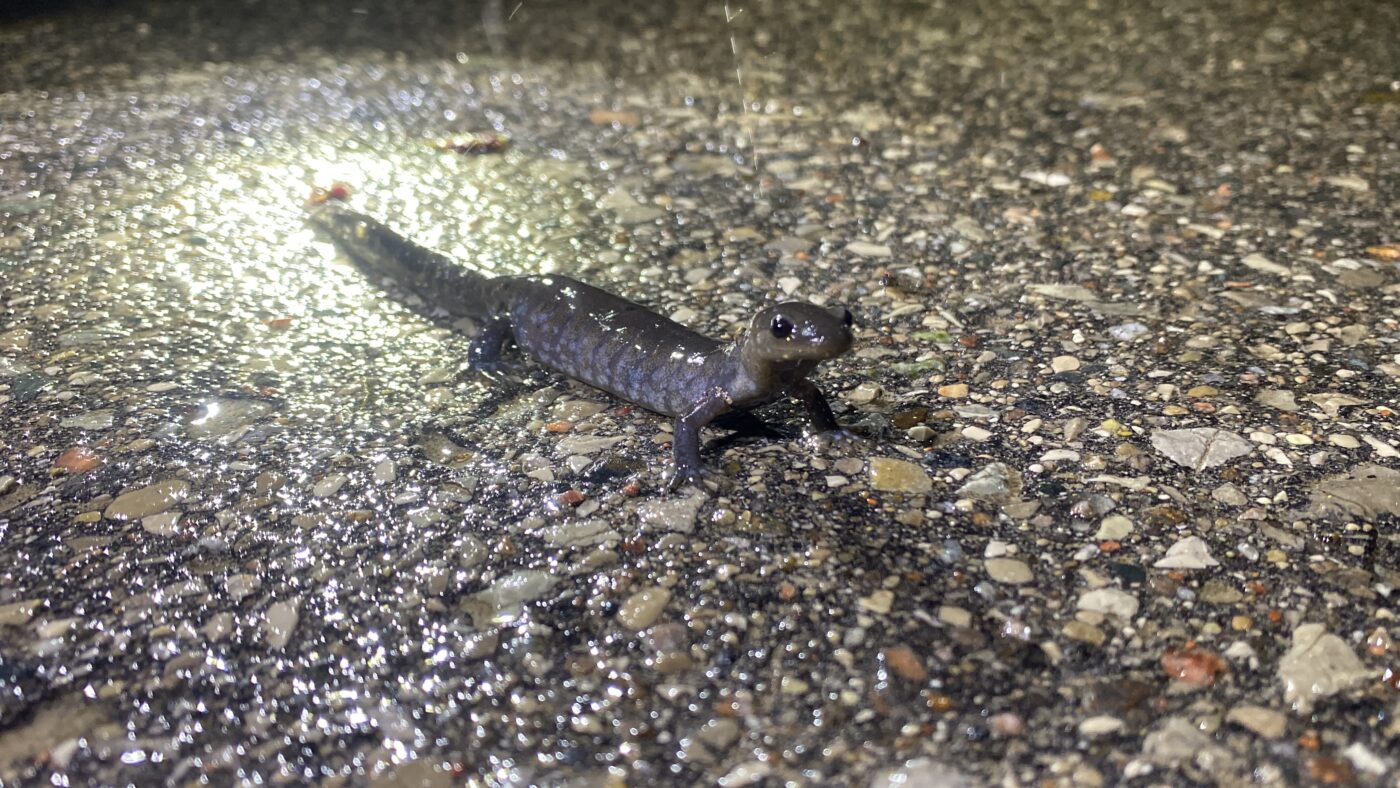Perhaps nothing symbolizes the end of winter like the return of the amphibians.
Amphibians such as Jefferson-blue spotted salamanders, toads, and wood frogs emerge from winter hibernation, typically on the first warm/rainy/wet nights early spring, after the ground has thawed. They make their way into wetlands where they will mate and lay eggs. Unfortunately, because forest and wetland habitats are often disconnected by development, many migrating amphibians have to cross through dangerous roads, leading to mortality of slow-moving wildlife, even in low traffic areas.
This is where our staff and volunteers come in – think of us as their personal escorts! Trained volunteers walk up and down assigned sections of road and record observations of dead/injured/alive animals using iNaturalist, as well as help them safely cross the road.
Our Amphibian Migration initiative is in its fourth year. We also have a separate community science program called Wildlife on Roads, where volunteers undertake a similar monitoring initiative at various roads across the region. The data from these projects helps us understand what species are impacted, while supporting the need for mitigation measures, such as eco-passages and exclusion fencing.

